Selection of the most interesting space news for the week: You can find the ISS through the NASA mobile app; another aurora was observed over Ukraine, and we are figuring out whether Israel really conducted the first battle in space.
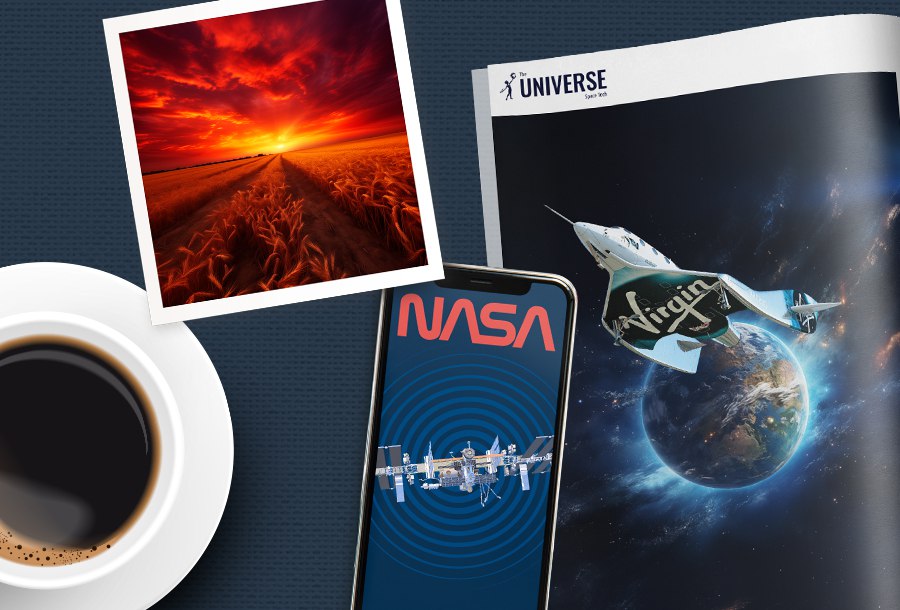
“Invention is the most important product of man’s creative brain. The ultimate purpose is the complete mastery of mind over the material world, the harnessing of human nature to human needs.”
― Nikola Tesla, My Inventions
How to find the ISS in the sky: NASA releases a convenient mobile application
The International Space Station (ISS) makes 16 orbits around the Earth per day. Despite the height of about 400 km, it is easy to recognize thanks to the shiny solar panels that reflect the sun’s rays. NASA has launched a new, convenient Spot the Station application for mobile devices on iOS and Android. It has a number of useful functions to facilitate observations of the ISS. You can set up alerts about the approach of the station. The mobile app even uses augmented reality to facilitate the search. At the top of the display, you will see the date of the next ISS passage over your region. You can select a date and view a list of the next flights with an indication of their start and end points. Returning to the main page, you will see 3D images of the Earth and the ISS, which show the current location of the station and its trajectory. The app also includes a two-dimensional map showing the day and night regions.
NASA will extract oxygen on the Moon
The Moon is almost completely devoid of an atmosphere, and the one that exists contains almost no oxygen. In addition, there is not much water ice on this celestial body from which it can be extracted. Meanwhile, when a station is built on the surface of our moon, oxygen will be needed in large quantities. Until now, everything necessary for human life and the work of mechanisms has been produced on Earth. However, this is justified only for small volumes and a limited time of use. Therefore, if we want to settle in space, we must learn how to make everything from local materials. In fact, NASA scientists have known for several years that it is possible to extract oxygen on other planets. This was demonstrated by the MOXIE experiment, the equipment for which is mounted on board the Perseverance rover. It produces only 6 grams of oxygen per day — like a small tree. This is quite enough to demonstrate that the technology works.
The end of space tourism: Virgin Galactic will stop flights of the VSS Unity spaceplane
Virgin Galactic will reduce the number of flights of its VSS Unity suborbital spacecraft (SpaceShipTwo) and completely stop them by mid-2024. This was stated in a recent announcement by its management. Commercial operation of VSS Unity began in the summer of 2023. At the moment, the spaceplane has managed to make five flights. The last one took place on November 2, one of its participants was the head of the New Horizons mission, Alan Stern.
The sixth commercial flight of Virgin Galactic is scheduled for January and the seventh for the second quarter of 2024. The eighth flight may take place around the middle of next year, but Virgin Galactic has not yet decided whether it will carry it out. But even if this flight takes place, it will most likely be the last for VSS Unity. The reason why Virgin Galactic actually decided to stop flying VSS Unity is because of its intention to focus all resources on creating the next generation Delta spaceplane. According to the company’s management, Delta class devices will be able to fly twice a week, unlike Unity’s monthly flights. At the same time, they can carry up to six passengers against Unity’s four, which in theory can bring the company 12 times more revenue per month.
Falcon Heavy will launch a space drone for the US military for the first time
The Falcon Heavy rocket will be used for the first time to launch the X-37B space drone into orbit. The launch is scheduled for December 7, 2023.
The X-37B was developed by Boeing on the orders of the American Air Force. It has a length of 8.9 m, a height of 2.9 m, and a wingspan of 4.5 m. The spacecraft is launched into orbit using a rocket, and when returning to Earth, it lands like an airplane. The take-off weight of the spaceplane is 5 tons, and it is equipped with a cargo compartment that can accommodate up to 900 kg of payload. In total, two such vehicles were built. Since 2010, they have made six long-term flights into space. The last of them began on May 17, 2020, and ended on November 12, 2022, for a total of 908 days.
A distinctive feature of the new flight will be the use of a Falcon Heavy rocket to launch the X-37B for the first time. SpaceX received a USD 130 million contract for this mission in 2018. Then it was assumed that it would be launched in 2021. But in the end, the launch was delayed by two years due to the unavailability of the payload.
Aurora in Ukraine: The second in a year
On the evening of November 5, another aurora was observed from almost the entire territory of Ukraine. The “source” of the event was most likely an active region on the solar surface with the AR3474 index, where two strong flares were recently observed.
During solar flares, high-energy particles appear in the solar wind, capable of “getting closer” to us. According to the laws of electrodynamics, it is easiest for them to do this in the area of the earth’s magnetic poles, which do not coincide with geographical ones (and constantly change their position), but in our era they are not very far away from them. At altitudes of about 200 km, these particles begin to collide with atmospheric gas atoms. At the same time, energy is released in the form of electromagnetic radiation. We see it as the Aurora borealis.
The first aurora occurred on April 23 of this year in the northern part of the sky, which became an “echo” of a powerful solar flare. It can be stated with sufficient confidence that in the near future we will witness many auroras, the visibility zone of which will cover even low latitudes. At least until the end of 2024, the activity of the Sun will grow, along with the number of flares and their power. However, astronomers have not yet learned how to predict their appearance (and, as a result, the appearance of auroras).
Photo of the week: Meeting of the Moon and the ISS
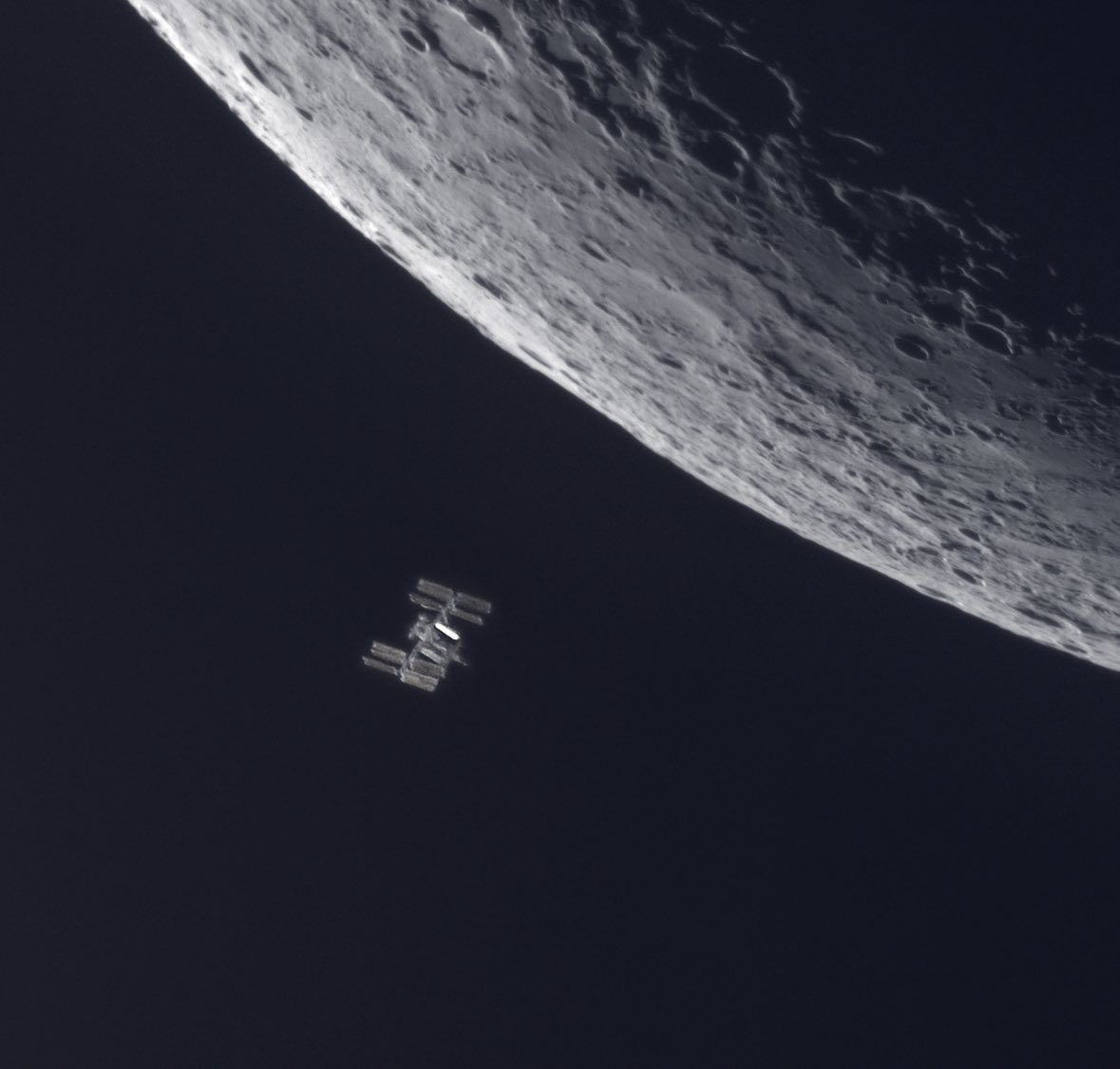
The famous astrophotographer Andrew McCarthy once again pleased all fans of his work with a very spectacular picture. This time he captured the “meeting” of the Moon and the ISS. In the photo of McCarthy, the station is “adjacent” to the lunar sickle. The ISS is fully illuminated, which allows you to see it in detail. The picture shows both its individual modules and the famous truss structure on which solar panels are placed. They provide the orbital outpost of humanity with energy.
Interesting figure — 6.2 billion km
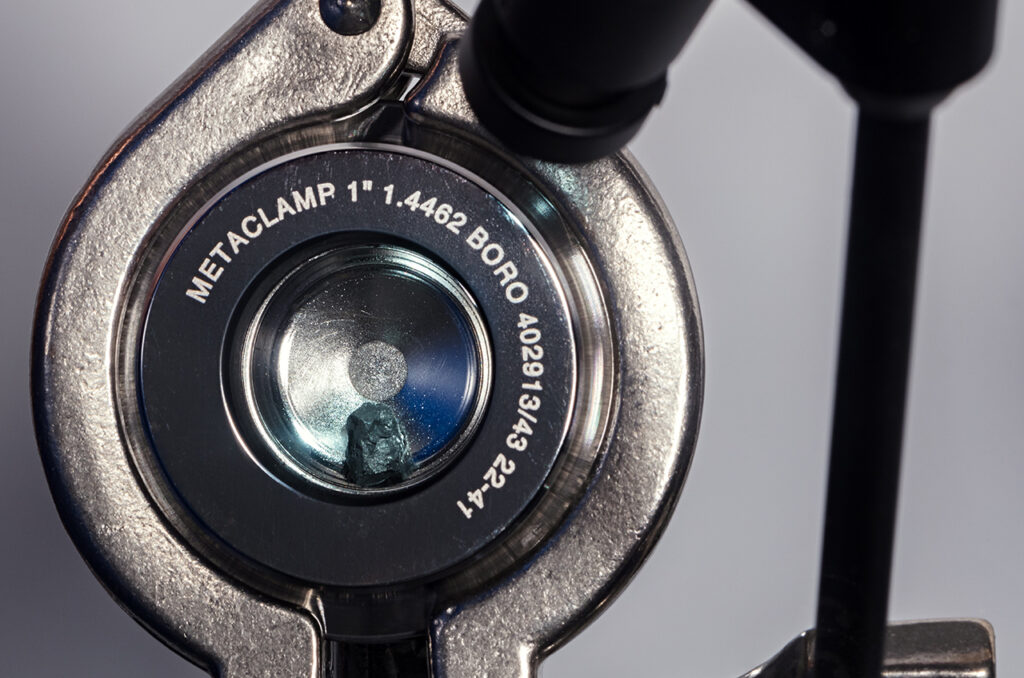
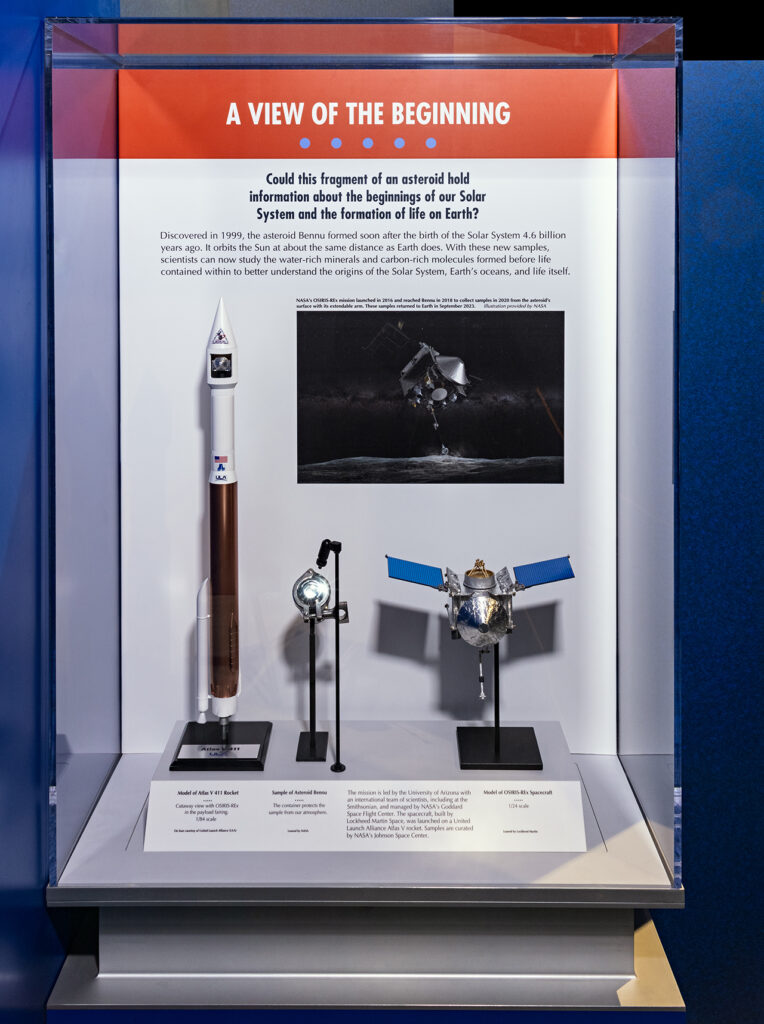
A fragment of the asteroid Bennu was brought to Earth by the OSIRIS-REx spacecraft, which covered a distance of 6.2 billion km. The sample is presented in a sealed stainless steel capsule with a glass viewing hole filled with pure nitrogen. It is a black stone about 8 mm in size and weighing 143 mg. Two models are located next to the sample: a 1:84 scale replica of the Atlas V rocket that delivered OSIRIS-REx into space and a 1:24 scale model of the probe created by Lockheed Martin.
Something to read on the weekend
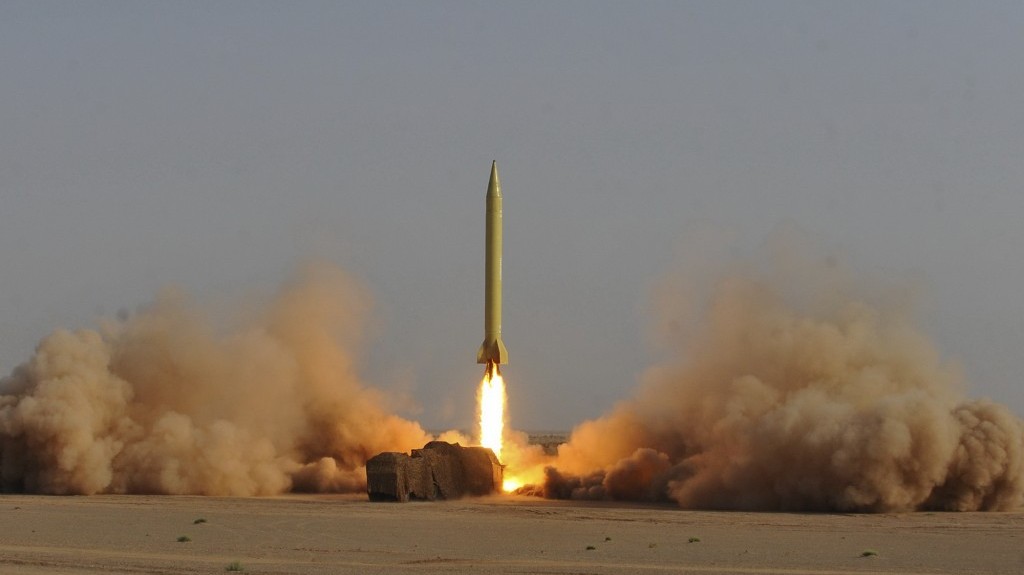
Reconnaissance vehicles are the most powerful means of intelligence in modern wars. Ukraine uses images taken by military and commercial satellites of democratic countries. Russia, cut off from the civilized world by sanctions, relies on what it has been launching in recent years. Our author Oleksandr Burlaka talks about what Russian satellites see.
On October 30, the first ever space battle took place. At least that’s how it was described in a publication by The Telegraph, which was widely quoted by various media. Nikita Litvinov offers to find out whether Israel really conducted the first battle in space.
Read also: Lucy probe made an amazing discovery, and a giant canyon of fire appeared in the Sun: News Digest
Follow us on Twitter to get the most interesting space news in time
https://twitter.com/ust_magazine
